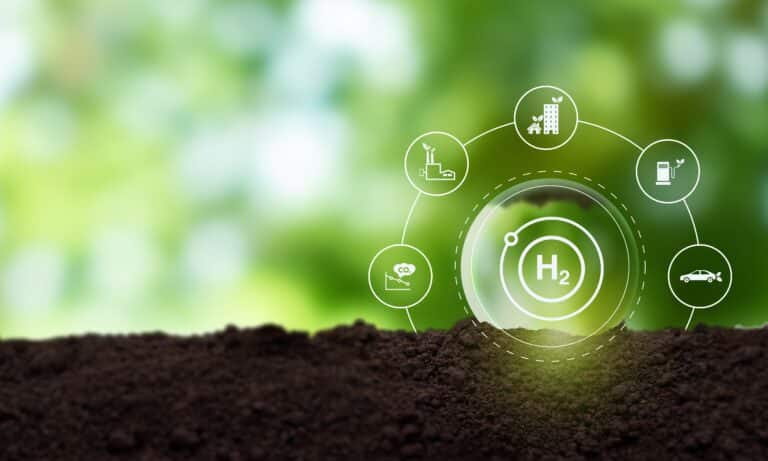The Production and Applications of Carbon-Negative Hydrogen
This report represents the research and views of the author. It does not necessarily represent the views of the Center on Global Energy Policy. The piece may be subject to further revision. Contributions to SIPA for the benefit of CGEP are general use gifts, which gives the Center discretion in how it allocates these funds. More information is available here. Rare cases of sponsored projects are clearly indicated. For a full list of financial supporters of the Center on Global Energy Policy at Columbia University SIPA, please visit our website. See below a list of members that are currently in CGEP’s Visionary Annual Circle.
-
CGEP’s Visionary Annual Circle
-
(This list is updated periodically)
Air Products
Anonymous
Jay Bernstein
Breakthrough Energy LLC
Children’s Investment Fund Foundation (CIFF)
Occidental Petroleum Corporation
Ray Rothrock
Kimberly and Scott Sheffield
Tellurian Inc.
Executive Summary
As the window of opportunity to avert the worst effects of climate change closes, rapid decarbonization efforts have been turning to novel low-carbon hydrogen applications in the fields of heat, energy storage, and fuel cell technology as a potential solution for traditionally hard-to-abate sectors. Green hydrogen, in particular, defined as hydrogen produced from water electrolysis using renewable or low-carbon electricity, has received the lion’s share of attention. By comparison, little attention has been paid to biohydrogen (Bio-H2), a type of hydrogen produced from organic waste streams (e.g., agricultural waste) that can potentially yield a carbon-removing (or climate-positive) fuel when coupled with efficient CO2 absorption and subsequent storage. Indicatively, few hydrogen supply-and-demand forecasts or high-level hydrogen strategies mention it. However, Bio-H2 presents opportunities not only to establish a cyclical hydrogen system with waste converted into energy but also to address emissions that remain after all technically and economically feasible efforts have been made to eliminate them.
This report, part of the Carbon Management Initiative at the Center on Global Energy Policy, explores the current state of play for Bio-H2 and its potential contribution to decarbonization efforts. The report begins with an analysis of the varying definitions and categorization of Bio-H2 in the literature, which may relate to its classification as both a hydrogen and a bioenergy with a diverse selection of sources and manufacturing pathways. Next, it assesses the crucial question of Bio-H2’s carbon intensity, which has additional specifications to those of blue hydrogen (defined as hydrogen manufactured from natural gas with carbon capture and storage [CCS]) and green hydrogen production, including land use, land use change, use of dedicated fuel crops (and associated land use issues), status and footprint of wastes (agricultural, forestry, and municipal), and avoided or reduced methane emissions. The report shows that if the biomass feedstock is not carefully selected and the energy consumed during its processing is not closely monitored and controlled, Bio-H2’s carbon footprint can potentially exceed that of fossil-based hydrogen today. Therefore, to avoid any potential negative climate impacts from utilizing Bio-H2, the assessment and governance of biomass feedstock for Bio-H2 manufacturing is critical.
This report also shows that the potential carbon-removing value of Bio-H2, particularly the carbon-negative hydrogen derived from biomass wastes and CCS, far outweighs its energy value and that Bio-H2 can be manufactured using technologies that are relatively mature and near commercial stage. Nonetheless, because the carbon-negative value of Bio-H2 is contingent on the use of biomass wastes, which is a constrained resource, Bio-H2 should only be employed when the capacity of other decarbonization methods is limited. Key opportunities for its application present in hard-to-abate sectors with potential for manufacturing zero carbon or even carbon-negative steel or chemicals. In regions where waste biomass is abundant and underutilized (e.g., East or Southeast Asia), Bio-H2 can also enable a circular carbon economy and offer flexible carbon management solutions. For example, local food scraps and agricultural waste (e.g., rice husk) can be converted into fertilizers (created from hydrogen-derived ammonia), which can cut carbon emissions from food production.
At present, however, the wide deployment of carbon-negative Bio-H2 still faces considerable obstacles. If policy-makers and business leaders wish to overcome these obstacles, the following recommendations may be pertinent:
- Incorporate Bio-H2 manufactured from biomass wastes and CCS technologies into national hydrogen strategy and planning. With a potential carbon footprint of between around −21 kg-CO2/kg-H2 and −15 kg-CO2/kg-H2 (using a median estimation of life-cycle assessment and land use change), Bio-H2 manufactured in this way can offer a significant climate benefit.
- Apply Bio-H2 manufactured from biomass wastes coupled with CCS technologies as a deep decarbonization tool for hard-to-abate sectors. Carbon-negative Bio-H2 can potentially enable the production of zero carbon or even carbon-negative steel (−0.61 tCO2/t to 0.39 tCO2/t) and/or chemicals such as ammonia (−4.04 tCO2/t to −0.6 tCO2/t) and methanol (−3.89 tCO2/t to −0.17 tCO2/t) (see Table 5 for details).
- Establish standardized, verifiable, and transparent carbon-accounting methods as well as a governance infrastructure for biomass procurement and Bio-H2 production. These can help ensure that the use of Bio-H2 produces climate benefits and can help anchor agreements between suppliers, purchasers, and countries to prevent malpractices in the harvesting of biomass and miscalculation in the carbon accounting of Bio-H2’s footprint.
- Introduce government incentives for the production and consumption of carbon-negative Bio-H2. Such incentives can encourage the production and use of carbon-negative Bio-H2 toward the development of a Bio-H2 market.
- Encourage government investment in and policy support for:
- Enhancing waste management infrastructure and the collection and usage rate of biomass wastes. This can help to eliminate the widespread burning and landfill disposal of biomass waste, including crop residue and municipal solid waste, which leads to air and water pollution and additional greenhouse gas emissions.
- Improving Bio-H2 production technologies, particularly for gasification. This can help to address remaining barriers to scaling up certain thermochemical Bio-H2 production technologies, includingcatalyst fouling, inconsistent feedstock quality, and gas cleaning, as well as metabolic technology pathways, which are still subjected to low volumetric and subject-specific yields.
- Further reducing Bio-H2 production costs, which will require a lower feedstock cost across regions and a reduced CAPEX cost from improved and scaled biomass gasification technology. This can help make Bio-H2 consistently cost-competitive at $2/kg-H2.Currently, production costs for Bio-H2 range widely ($1.25–$10.51/kg-H2). The lower-range costs are comparable to the mean costs of gray hydrogen ($0.5–$2/kg-H2), but they are limited to regions with cheap and abundant biomass supplies situated within a short distance of the manufacturing site.





